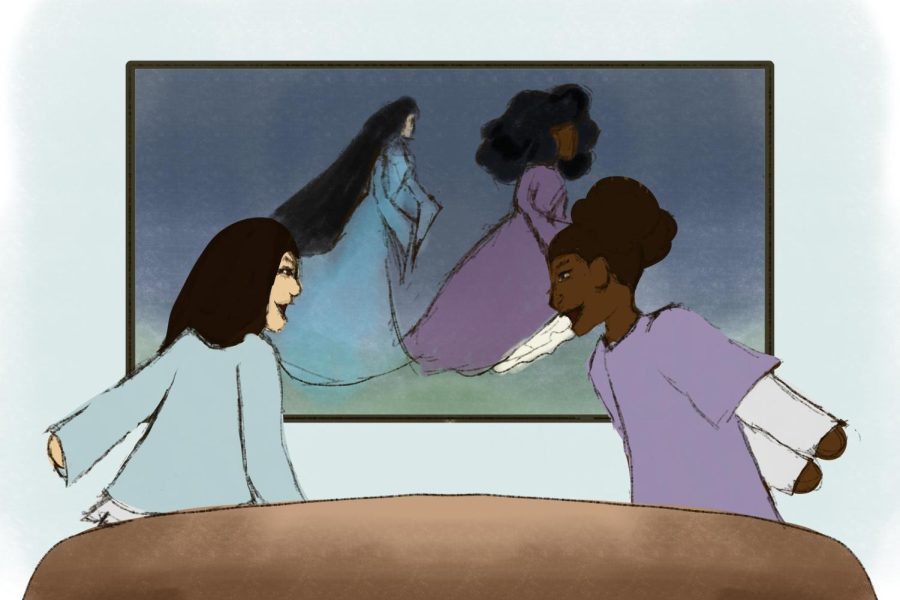Opinion | Proper representation in movies and remakes matters
June 6, 2023
The debate about proper representation in Hollywood has been going on for years. When Disney announced “The Little Mermaid” live-action movie had cast Halle Bailey as Ariel, they received some racist backlash — since cartoon Ariel is white and Bailey is Black. Some stated that because Halle “did not look like Ariel,” she shouldn’t be playing the role. However, most of the feedback was positive. It’s great to see Disney casting a Black woman in a Disney princess remake. Yet, on some level, it feels a bit performative — something Disney has been accused of in the past. Many have argued that some of Disney’s new adaptations and remakes feature “forced representation.”
Proper representation is a little tricky to do right. Based on the type of project that’s created, it may or may not make a big difference. In drama or fictional movies and shows, there’s a lot more room for creative interpretation of things such as race. However, in documentaries, docuseries or anything that is nonfictional and based on historical facts, there is less room for these creative interpretations. In projects where the character’s race, culture or ethnicity plays some sort of factor, it’s best that they are cast accurately — even if it’s fictional.
Back to the Ariel example, who’s to say what race a mermaid is or should be? She is literally a mythical creature with bright red hair. Her race is pretty much all up to creative interpretation. Her race would not have made a difference in what happens in the movie. Her ethnic background has no impact on her storyline. On the other hand, if Mulan was played by a non-Asian character, that would certainly raise some eyebrows. Even though Mulan is another fictional character created by Disney, the contexts surrounding the movie are quite explicit about what race and ethnicity she is. The origins of Mulan stemmed from an ancient Chinese folk story called “The Ballad of Mulan.” The entire story takes place in ancient China and includes traditional Chinese clothing and culture. It would make the most sense and be more accurate if the characters in the live-action remake are of Asian or Chinese descent.
If Disney, and Hollywood itself, wanted to truly be diverse and progressive, they would start by making projects for actors and actresses of color instead of trying to squeeze them into a previously portrayed white character as “The Little Mermaid” exemplified. We have seen progress recently with “Crazy Rich Asians,” “Everything Everywhere All At Once,” both “Black Panther” movies and “Shang Chi.” These movies are all major successes. They feature a greatly diverse cast and the story and characters were written for POC. The casting of the characters didn’t feel forced. It made sense with the storyline. In the “Black Panther” movies, the directors and producers took inspiration from real African artifacts and cultures and included them in the movies. In “Everything Everywhere All At Once,” the movie touches on the Chinese-American experience and a mother-daughter relationship many Asian Americans can relate to. This is all to say that complex stories about POC can in fact be done, and they can turn into massive success stories.
The performative inclusivity and diversity may even set us back in truly diversifying Hollywood and showcasing stories and experiences of POC. Casting a person of color just because they were needed as some diversity quota isn’t creating any real or impactful changes to the diversity of Hollywood. It’s important that children coming from various ethnic and cultural backgrounds get to see part of themselves accurately represented on the big screens. It shows us that we are more than just our skin color — we also have deep and complex storylines that deserve to be told.
When news and entertainment media portray minority groups a certain way for so long, the public starts seeing them that way, too. Not only that, but the media can also affect how minority groups see themselves. So, it’s important to diverge from that path and fix what damage has been done. Stories like “Black Panther,” “Shang Chi” and “Everything Everywhere All At Once” portray Black and Asian characters as more than just what they look like on the outside. These movies diverge from the stereotypical portrayal of Black and Asian people that Hollywood has depicted for decades. It shows that we can be the main characters, too, and not just the side characters. That is why proper representation is so important.
Kelly Xiong primarily writes about fashion and current social issues. You can reach her at [email protected].








